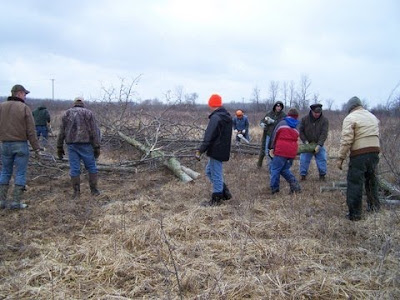Check out this cool one-minute video about the differences between soil that has been tilled for farming (disturbed) and soil that has been left alone for many years (un-disturbed). It illustrates a prime example of why no-till farming can really improve the quality of your soil, i.e. the quality of the crops you grow! Take a minute (literally one minute!) to watch the video. Very cool video. -Julie
To a farmer, soil is life blood. Traditional farming can do more harm than good to this valuable natural resource. Switching to No-till farming can help the soil to re-gain its natural structure, improve the flow of water into the earth, increase the amount of organic matter in the soil used to nourish crops, retain soil moisture and dramatically reduce the amount of erosion that carries soil into adjoining waterways.
How does it work? The intention of no-till farming is to minimize soil disruption. It allows the farmer to plant crops and control weeds without turning the soil. Farmers leave crop residue on the fields after harvest, where it acts as mulch to protect soil from erosion. In the spring, farmers use specially designed seeders to penetrate through the residue to the undisturbed soil below where seeds can germinate and then surface as the new crop.
The native grass drill is designed to be used with the fluffy native grass seeds that stick together and get stuck in traditional planters. It also has depth bands that prevent the seed from planting more than one quarter inch deep.
To reserve the no-till drill or native grass drill, call our no-till technician John Densmore at 989-620-4240. Also check out the tab No-till Drill Rental for complete details and downloadable rental agreements.
Wildlife Habitat Field Day – Restoring Pheasant Habitat
On March 3rd, 2012 the Gratiot Conservation District, Michigan Department of Natural Resources and Pheasants Forever cooperating partners held a Wildlife Habitat Field Day at the Maple River State Game Area. There was a short presentation to start the day, followed by habitat management activities. The goal for the day was to remove unwanted brush and trees and create brush piles in target areas that will benefit small game species and songbirds. Under the direction of Wildlife Biologist Jeff Kalin and the assistance of public volunteers, we made a large impact in a short period of time. Breckenridge Boy Scout Troop 600 came out ready to work and were a big help. If you would like more information about our field day or how you can get more involved in the Michigan Pheasant Restoration Initiative, please call Private Lands Biologist Jeff Kalin at the Gratiot Conservation District at 989-875-3050 or on his cell phone at 989-292-2075.
Check out our article about the Michigan Pheasant Restoration Initiative
Check out our article about the Michigan Pheasant Restoration Initiative
Subscribe to:
Comments (Atom)







